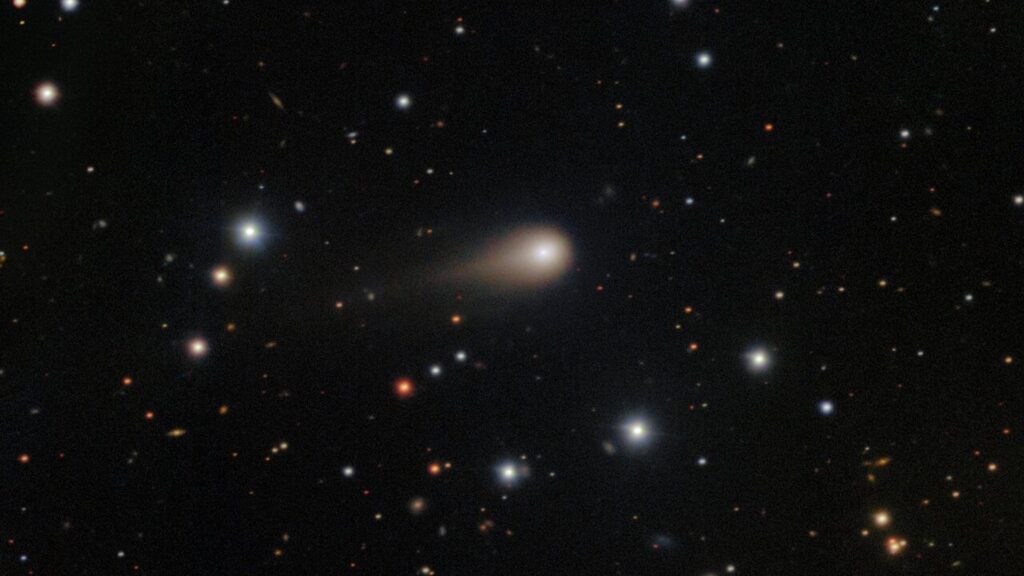Interstellar comet 3I/ATLAS began spraying water “like a fire hose” before it approached the sun, according to a recent study.
Researchers observed comets scattering water in an unusually early step in a discovery that sheds light on how the building blocks of life are distributed in other planetary systems.
you may like
“When we detect water, or even its faint ultraviolet echo, from an interstellar comet, we are reading a note from another planetary system,” study co-author Dennis Bordewicz, a professor of physics at Auburn University in Alabama, said in a statement. “It tells us that the components of life’s chemical reactions are not our own.”
NASA’s Neil Gehrels Swift Space Observatory detected hydroxyl (OH) gas, an ultraviolet byproduct of water, being emitted from the comet when it was three times closer to the Sun than Earth (2.9 AU away). This is much farther than the region of the solar system where water ice typically turns to gas during a comet’s passage.
The comet was calculated to be ejecting about 88 pounds (40 kilograms) of water every second, roughly equivalent to a fire hose running at full speed, researchers said in a statement.
Since its discovery in July, scientists have been using a variety of telescopes to study everything they can about 3I/ATLAS. Their findings so far indicate that the comet is moving through the solar system at speeds exceeding 130,000 miles per hour (210,000 kilometers per hour) in an unusually flat and straight orbit.
3I/ATLAS is probably the largest interstellar object ever observed, but researchers have not yet determined its exact size. According to data from the Hubble Space Telescope, 3I/ATLAS has a maximum width of about 3.5 miles (5.6 km). 3I/ATLAS may also be the oldest comet ever observed, with one study suggesting it is about 3 billion years older than our 4.6 billion year old solar system.
In the new study, the researchers used observations made with the Neil Gehrels Swift Observatory’s ultraviolet and optical telescopes in July and August. The researchers suggested that the ultraviolet hydroxyl signal could be the result of sunlight heating small ice grains on the comet’s core (head), causing them to evaporate into gas.
3I/ATLAS is only the third interstellar comet ever recorded, following the discoveries of the cigar-shaped comet 1I/Oumuamua in 2017 and the primitive comet 2I/Borisov in 2019. So far, each interstellar visitor has several distinct characteristics, suggesting that the universe may contain a variety of environments for the formation of comets and planets.
“All previous interstellar comets have been surprising,” study lead author Zexy Shin, a postdoctoral fellow at Auburn University, said in a statement. “Oumuamua was dry, Borisov rich in carbon monoxide, and now ATLAS is abandoning water at distances we never expected. Each is rewriting what we thought we knew about how planets and comets form around stars.”
Source link

